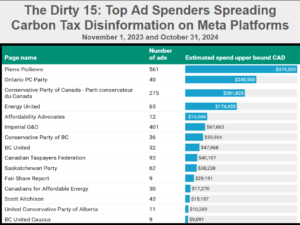CCL is often asked if we think carbon pricing alone is enough: “Aren’t subsidies for electric cars also a good idea?” or “Shouldn’t governments invest directly in green energy?” Recent analysis by Canada’s Ecofiscal Commission can help us provide a thoughtful, evidence based response to questions like these. Jason Dion from Canada’s Ecofiscal Commission will be presenting at CCL’s national conference in October. It should be a fascinating talk, challenging us to consider if there just might be places where we would consider something other than a carbon price. If you can’t make it to the conference, you’ll be able to watch Jason’s presentation online. Ecofiscal does an admirable job of demystifying economics, but their report is still quite a bit to digest. To help you out, here is a brief overview of why there are times when we might not want to be carbon pricing purists. The Ecofiscal Commission agrees with CCL that carbon pricing is the most cost effective way to reduce GHGs in almost all cases, and “should do most of the heavy lifting.” However, even a well designed carbon pricing system may benefit from complementary policies such as regulations, subsidies, education and direct government investment. Gaps in coverage Some distributed emissions such as methane produced by agriculture and land use are challenging and costly to measure. Applying a carbon price may not be effective, no matter how high the carbon price is. Imagine measuring emissions from all those cows …. Land management regulations or incentives may work better. Weak price signals Carbon pricing assumes that consumers respond to higher prices by buying fewer carbon intensive products, but sometimes that price signal doesn’t work well until carbon prices are very high. What about companies making investment decisions? Policies with co-benefits Government policies may have primary goals not related to climate action, but they still reduce GHGs. Public transit and cycling policies aimed primarily at reducing traffic congestion will reduce emissions, as will coal phase out policies focused on air quality. In conclusion, carbon pricing is the most cost-effective tool to reduce GHGs but in a few specific instances, complementary policies can be worth implementing. That said, governments need to clearly demonstrate the need for these additional measures. Regular analysis and review is needed to phase out redundant, high cost and ineffective policies. ABOUT THE AUTHOR REMINDER: CCL official talking points are in our laser talks and media releases
Judy O’Leary is an active member of CCL Nelson-West Kootenay. She has taught post secondary economics and has worked in policy research, program evaluation and environmental impact assessment.
BLOG: Is carbon pricing always enough? by Judy O’Leary
Home » CCL Canada News » BLOG: Is carbon pricing always enough? by Judy O’Leary












